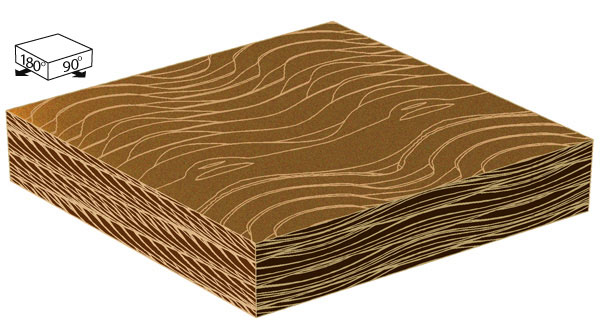Pacific Coastal and Marine Science Center
Bedform Sedimentology Site: “Bedforms and Cross-Bedding in Animation”


FIG. 67. Structure formed by reversing, sinuous bedforms with reversing, superimposed, two-dimensional bedforms. This depositional situation combines the bedform reversals in Figure 58 with the superimposed bedforms in Figure 66. The bedforms in the figure above are depicted at a time when they are completing the part of their cycle in which they migrate toward the left; those in the figure on the right are completing their phase of migration toward the right.
RECOGNITION: Interpretation of this structure is extremely difficult, not merely because two processes (reversals of the main bedforms and migration of the superimposed bedforms) form bounding surfaces within sets of cross-beds, but also because the two processes do not have the same period. As a result, the relative phase of the two processes changes through time, thereby causing the subsets of cross-beds to differ slightly from one another. In this structure, the more sinuous bounding surfaces (most clearly distinguished on the horizontal section) were formed by migration of the superimposed bedforms, and the somewhat straighter bounding surfaces were formed by reversals of the main bedform. Although the superimposed bedforms reverse their direction of migration (simultaneously with the main bedforms), sets of cross-beds deposited by the upslope-migrating superimposed bedforms are not preserved, because the upslope-migrating bedforms always are situated on the eroding side of the main bedform. Real bedforms, however, are not as geometrically perfect as the computer-generated bedforms and may have locations where upcurrent-facing slopes undergo deposition, thereby preserving deposits of upslope-migrating bedforms. Upcurrent- facing slopes can also undergo deposition by systematic processes as well as by random processes. For example, growth of bedforms may involve deposition on upcurrent-facing slopes. In such situations, deposition at the bedform crest can incorporate beds deposited by upslope-migrating bedforms (Dalrymple, 1984).
ORIGIN: This structure requires cyclically reversing flows to produce cyclically reversing bedforms and requires flows that maintain superimposed bedforms.